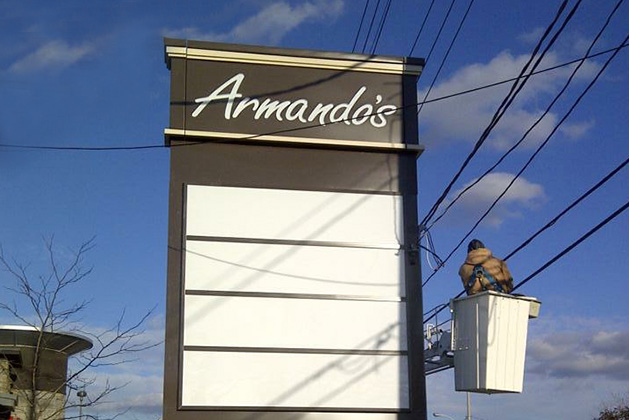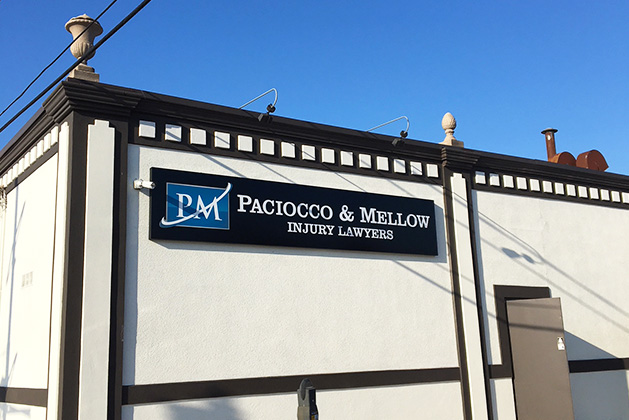A little more about Superior Signs and how we do business.
On this page you can look through many of the questions we are frequently asked. They range from questions about whether we sell to “Trade” customers to whether it is safe to send your valuable artwork to us for processing. Read through them and learn a little more about how we do business.
How did Superior Signs and More get its name?
Superior Signs and More began in 1959 as a family-owned business in Southwest Ontario specializing in screen printing and traditional sign-making using artistic craftsmanship and hand lettered signs. Through the years our business evolved, adapting new technologies as they became available and enjoyed rapid growth.
In 2008, we joined forces with “Denis LaBonte Signs and More”, (a previous merger of “Denis LaBonte Signs” and Jim Dorner’s “Signs and More”) to create Southwest Ontario’s largest, Full Service Sign Design, Fabrication, Installation and Maintenance Company. Our acquisition of the www.superiorsignsandmore.com domain name makes it much easier for former clients of “Denis LaBonte Signs” and “Signs and More” to find us on the web.
Do you sell to 'Trade' customers?
Yes, we do. Our customers include many prominent advertising agencies, commercial printing companies and smaller sign companies.
How do I send my files for printing?
Please contact us for more information.
Am I limited to the substrates or media?
We offer a wide array of printable media. Our customer service staff research products daily to test which medias work best with applications and presses.
We can print on media such as Artist Canvas, Cottons, Polyesters, Carpets, Vinyl, Silks, Fiberglass, Mesh and most rolled substances. For hard substrates we can mount images to Mightycore, Coroplast, Styrene, Sintra, Plexiglass, Pet-G, and others.
Soon we will be able to print directly to hard substrates rather than mounting.
Do you have experience in International shipments and projects?
Some of our largest customers and projects have come from the United States. We prepare all shipments with the proper manifest documents and can ship next day to US destinations.
How do I know my prints will meet my expectations?
Every job we produce has a colour proof attached to the file. We also ask that when you send us a file you also attach a colour proof. Our highly skilled colour experts and precision proofing devices will guarantee that your proof matches our product.
How do I know what media to use for the intended application?
We provide proper processes for every job and one of the most important is educating the customer on what medias are available to produce the desired print.
I've never shared my artwork with another company. How safe is it?
Our integrity is as important as our promises. We provide every project and every customer with complete confidentiality. We realize that many projects that we work on are in preparation for an important new initiative and that protecting is extremely important. We respect your privacy and will be extremely diligent in maintaining its security.
If I can re-size or rotate eps and tiff files in a page layout application why can't they be output that way?
In some cases tiff and eps files can be manipulated after they have been placed in the layout application. However, every instance of post-import manipulation creates the chance of postscript errors corrupting the final output, or in some cases making it impossible for the file to be output at all.
Rotating, tinting, clipping, re-sizing or any other manipulation of an import should take place in whatever application in which it was created, re-saved and imported. The cleaner the import, the cleaner the final postscript from which the output will be produced.
What file types can be used for our job?
For PC:
- Signlab with outlined fonts
- Casemate with outlined fonts
- Adobe Illustrator 9 with outlined fonts
- Corel Draw 9 with outlined fonts
- Adobe Photoshop 5.5 with outlined fonts
For Mac:
- Quark 5.1 Include all Postscripts and Screen Fonts
- Adobe Photoshop 6 Include Postscripts and Screen Fonts
- Adobe Illustrator 8 Include Postscripts and Screen Fonts
What happens if I select a spot colour?
As with RGB, spot colors were not intended for the process (four color; CMYK) environment. These colors were developed by pigment designers who license a color to manufacturers to produce ink that has the exact hue match to a specified color. Chip charts are provided either digitally (in the color selection portion of layout applications) or physically (on material printed with that specific ink; Pantone chart or chip books) and the user makes their selection and assignment. Some spot colors do exist within the CMYK gamut, but many do not. These colors cannot be produced accurately using any combination of the process color model.
What is Digital Printing?
Digital Printing is a technology allowing the operator to print directly from an electronic file eliminating costly setup materials such as plates, films, and screens.
What is the advantage of digital print?
Printing from an electronic file saves time and money. Extremely fast press machines mean that output is achieved without setup plates or screens. A production run can consist of one print or one hundred. If you need an additional print from the first run it is simply a matter of sending the file to the printer. If you are contemplating running an extremely large piece like 12 foot X 12 foot or larger then digital print is the cost effective way.
What type of turn around time do you offer?
The average production turn around time is three days. If you have a rush job please contact us and we will do our best to accommodate.
When I think of digital printers I think of copy centres, what makes your printers differ?
Size! We are able to output prints from 3 inches to fifty feet! We can assemble and finish the prints to be continuous or assemble on site.
When is digital print no longer cost effective?
With technology always improving, each year the printing speeds get better and better. We can print a single image one hundred and fifty times on standard media and remain cost effective. In the near future, roll to sheet or roll to roll digital printing will be a thing of the past and you the customer can expect digital print direct to hard substrate.
Why is there banding in my gradients?
Different layout applications compose gradients in different ways. Similarly, different types of output are capable of producing different resolutions of detail. Creating a course gradient for a device with a high line screen can produce “stepped” or “banded” output.
To ensure optimum results, create a high-resolution gradient in an image manipulation application (Adobe ® PhotoShop™ or Corel ® PhotoPaint ©). Then, introduce noise relative to the richness or hue of the colors used. Deeper, darker colors create a higher factor of noise; lighter colors create a lower factor of noise. This method will produce the softest, smoothest blend.
Why must I convert my RGB files to CMYK?
Most layout and presentation programs were originally designed to prepare files for 35mm slide output. Slides are imaged using an optical process where light is projected through film to produce colors on a white surface. Your computer monitor works in a similar manner. The monitor uses three colors (Red, Green & Blue or RGB) to output its display.
To output an image on a digital color device however, the file colors must be converted into a different color space referred to as CMYK. The CMYK color mode utilizes the ink colors Cyan, Magenta, Yellow and Black to print color on paper or other substrates.
The CMYK colors produce what is known as “Process Color” or “Four Color Process”. Not all colors in the RGB color mode are reproducable in the CMYK process. It is completely possible to select a color on your monitor that cannot be reproduced through the pigment found in CMYK inks.
When specifying color with CMYK values, use either a Pantone or TrueMatch process color swatch book. These will provide accurate representations of how your color will print. Your monitor will not display the correct colors and should not be relied upon for precise color control. Be sure to use the correct books for coated or uncoated paper/substrate.
Why must I send my fonts?
In order to image your file properly, we must have a copy of the font loaded on our system. We have an extensive collection of Adobe, Type 1 and TrueType fonts. However, there are far too many fonts in circulation for anyone to have them all.
When a file is submitted the layout application will indicate which fonts were used, but does not automatically include them. Therefore, you should send all the fonts that are used in the file (along with any imports used within the layout) in order to insure an accurate result.
Fonts used in the layout of a document reside either in the startup directory or in a folder on the hard drive of the computer where the document was created. Fonts may be loaded into the temporary memory of the computer and copies of the fonts are used until they are removed from memory or the computer is rebooted.
Why should I deal with a Canadian company?
Due to the Canadian Dollar trading to the U.S. Dollar at nearly 1.5, your buying power is 50% more on average! You also do not have to pay for import duties, Federal and State taxes! Take advantage of the high U.S. Dollar and get more for your money from our Canadian company!
Will quality suffer by using digital printing?
With today’s high-speed printers, quality is up to 600 dpi with six-colour presses. Outdoor prints at a viewing distance of five feet look excellent.
Will you create a display or sign for me including helping me to develop the graphics?
Yes, our design team is fully capable of helping you to create your message and then converting the idea to a professionally created sign or display.





